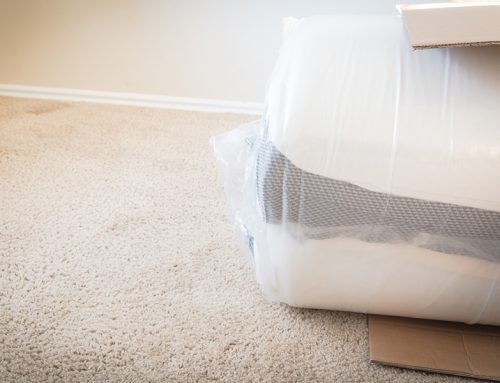 There’s nothing worse than waking up in your bed sweating through the sheets. Or tossing and turning because the temperature is making you uncomfortable. Unfortunately many people sleep hot on a nightly basis; and it’s incredibly frustrating. That is why temperature regulation or mattress breathability is an important feature to consider in a mattress. You don’t want a bed that is too hot or too cold – but just right.
There’s nothing worse than waking up in your bed sweating through the sheets. Or tossing and turning because the temperature is making you uncomfortable. Unfortunately many people sleep hot on a nightly basis; and it’s incredibly frustrating. That is why temperature regulation or mattress breathability is an important feature to consider in a mattress. You don’t want a bed that is too hot or too cold – but just right.
What do we mean by mattress breathability? Basically it refers to a mattress that allows the air to circulate, wick away moisture and stay dry. For some people, sleeping hot is influenced by a variety of factors such as age, climate, weight and location. Even sleeping with a partner (extra body heat) can contribute to sleeping hot. But there is something within your control to help you sleep cooler and that’s your bed.
Your mattress, mattress protector, sheets and bed foundation are all pieces of the puzzle that impact how cool or warm you’ll sleep. However, your mattress is the key ingredient and the most expensive one. Hence, if you’re in the market for a new mattress—thinking about cooling properties and breathability potential should be one of the top considerations in your decision making. We’ll get into this and how well different mattress types regulate temperature below.
Why temperature regulation matters
Studies demonstrate that lower body temperatures overnight promote better sleep whereas heat exposure affects our quality of sleep. Aside from other personal factors that may contribute to you sleeping hot, humans are just prone to rising bodily temperatures – especially when we crawl into a warm bed at night. We’re naturally going to produce body heat and sweat. Then our mattresses become the first point of contact to either manage it or not. And this is where temperature regulation or mattress breathability matters a whole lot.
What is the best temperature for sleep?
According to heathline, the ideal room temperature should be between 60 and 67 degrees Fahrenheit (15.6 and 19.4 degrees Celsius). You want to have a cool, not cold, atmosphere before you start to fall asleep.
The breathability of different mattresses
Every mattress will differ in terms of its breathability or “cooling” properties. You can sense if a mattress will be cooler depending on the type or construction. Keep in mind that there are many ways a mattress can help you to sleep cool, and it’s not necessarily a specific system. Furthermore, if you have a particular condition that causes night sweats, a mattress won’t necessarily take that away but it will provide relief.
If you want to find a mattress that meets your breathability needs – below is a lowdown on cooling features to look out for and how the main types of mattresses fulfill these needs.
Mattress cooling technologies to look out for
Breathable construction: when a mattress is built with chambers for air or with springs to prevent heat from being trapped.
Built-in cooling: this can take the form of gel, metal (ex. copper), or other materials embedded in a mattress.
Electric features: some mattresses have plug-in options or added components that allow cool water or air to flow through the mattress and keep it cool.
What mattress keeps you coolest?
No more night sweats
Say goodbye to hot, exhaustive sleeping and hello to a cool and comfortable recharge. If you have been sleeping too hot, then it’s probably your bed. Mattress breathability and airflow is one of the key components to a good night’s sleep. So maybe it’s time to consider getting a new mattress and put those night sweats to bed. Check out our roundup of the best mattresses for hot sleepers.




